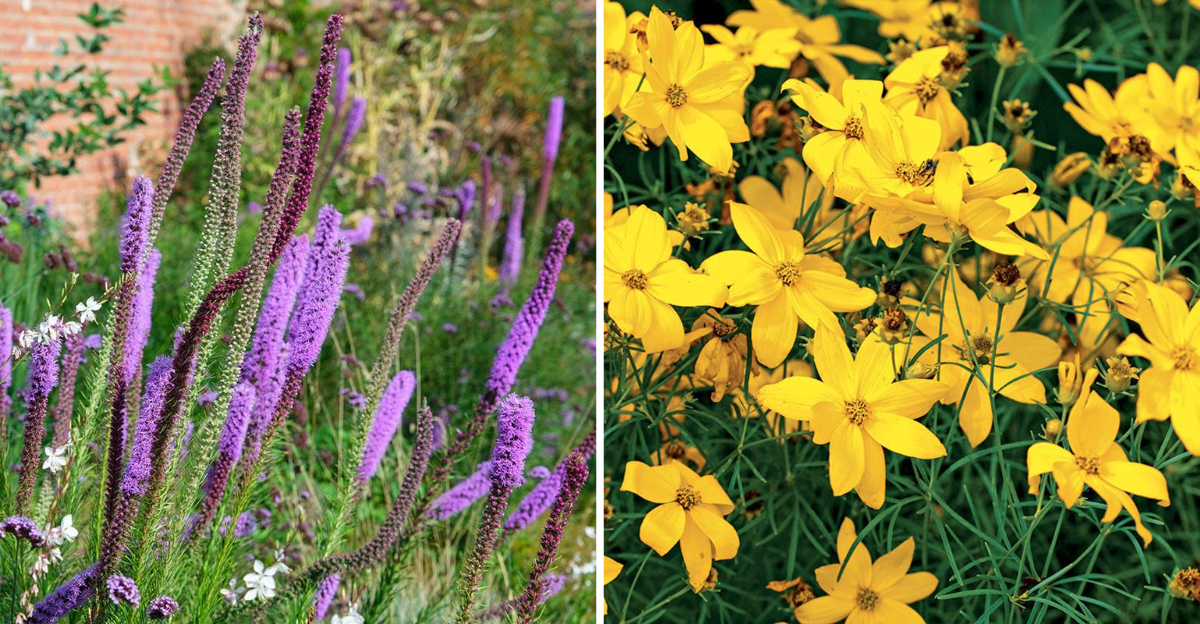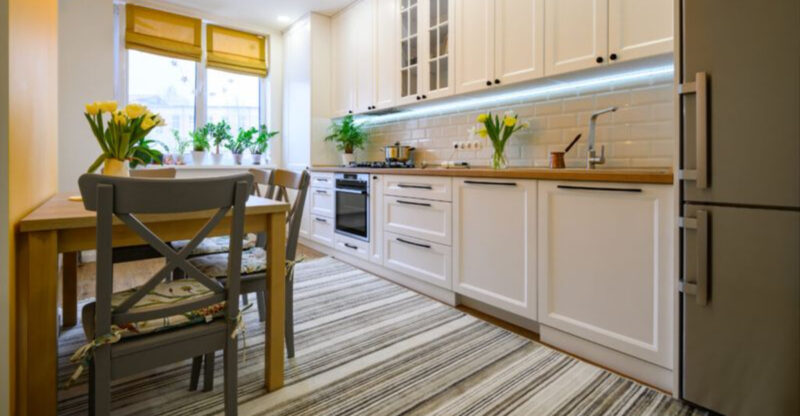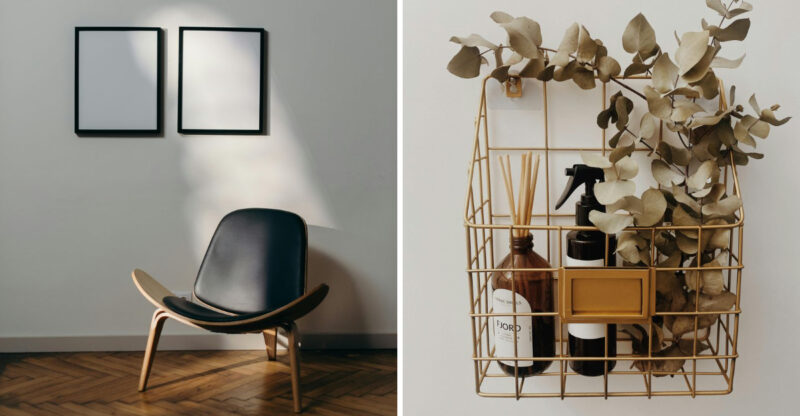14 Flower Varieties Illinois Homeowners Plant For Instant Outdoor Charm

Illinois gardens can transform into stunning outdoor spaces with the right flower choices. Planting colorful blooms that thrive in the local climate makes your yard more inviting while supporting helpful pollinators like butterflies and bees.
I’ve gathered a collection of flower varieties that grow beautifully across the Prairie State, offering vibrant colors from early spring through late fall.
1. Black-Eyed Susan
Bright golden petals surrounding a chocolate-brown center make this native wildflower instantly recognizable in Illinois landscapes. Rudbeckia hirta brings sunny cheerfulness to gardens from early summer until the first frost arrives.
It’s incredibly forgiving if you forget to water regularly, making it perfect for busy homeowners. Butterflies and songbirds absolutely love visiting these blooms, adding movement and life to your outdoor space.
When planted in groups, Black-Eyed Susans create dramatic waves of yellow that catch everyone’s attention. They spread naturally over time, filling in bare spots without becoming invasive or troublesome in well-maintained gardens.
2. Purple Coneflower
With its distinctive spiky center cone and drooping purple petals, Echinacea purpurea stands out among garden favorites. Bees practically line up to visit these blooms throughout the growing season.
Did you know this plant has been used in herbal remedies for centuries? Beyond its medicinal history, it’s simply tough as nails in Illinois weather, handling hot summers and cold winters beautifully.
Once established, Purple Coneflowers need minimal fussing and actually prefer not being overwatered. They bloom for weeks on end, providing reliable color when you need it most during the peak summer months.
3. Swamp Milkweed
If you want to help monarch butterflies, this pink-flowered beauty is your answer. Asclepias incarnata serves as both a nectar source and essential host plant for monarch caterpillars on their incredible migration journey.
Unlike its name suggests, you don’t need a swamp to grow it successfully. It simply tolerates wet soil better than most garden plants, making it ideal for those low spots where water collects after rain.
The fragrant flower clusters appear in mid-summer, attracting dozens of butterfly species beyond just monarchs. Watching these delicate visitors flutter around your garden creates a magical outdoor experience for the whole family.
4. New England Aster
When most flowers call it quits for the season, Symphyotrichum novae-angliae is just getting started. Late summer through fall, these vibrant purple blooms steal the show in Illinois gardens.
They grow quite tall, sometimes reaching four feet or more, creating beautiful vertical interest along fences or at the back of flower beds. The daisy-like flowers come in shades of purple, pink, and occasionally blue.
Pollinators desperately need food sources in autumn, making these asters incredibly valuable for local ecosystems. Plus, they’re native to Illinois, meaning they’re perfectly adapted to handle whatever weather comes their way without extra pampering.
5. Bee Balm
Hummingbirds zip straight to Monarda fistulosa like it’s their favorite restaurant in town. The tubular pink and purple flowers provide exactly the nectar these tiny birds need for their high-energy lifestyle.
Beyond hummingbirds, bees and butterflies also crowd around these aromatic blooms throughout summer. The leaves release a delightful minty fragrance when brushed against, adding another sensory dimension to your garden walks.
It’s also called Wild Bergamot, and early settlers used it to make tea with a flavor similar to Earl Grey. Growing in full sun to partial shade, Bee Balm adapts well to various garden conditions across Illinois.
6. Daylily
Are you looking for nearly foolproof flowers that deliver stunning results? Hemerocallis varieties come in almost every color imaginable except true blue, with trumpet-shaped blooms that open fresh each morning.
Though each flower only lasts one day, each stem produces multiple buds that keep the show going for weeks. They multiply generously over the years, giving you extras to share with neighbors or fill more garden space.
Daylilies handle Illinois summers without wilting and don’t complain about occasional neglect. They work beautifully along driveways, in mass plantings, or mixed with other perennials for continuous color throughout the season.
7. Sedum Autumn Joy
How many plants look gorgeous in four different seasons? This succulent perennial starts with blue-green foliage in spring, develops pink flower buds in summer, blooms rosy-pink in late summer, then turns rusty-red in autumn.
Even the dried flower heads look attractive through winter, providing architectural interest when snow blankets the garden. Butterflies mob the flat-topped flower clusters during their peak bloom period.
It’s virtually maintenance-free once planted, requiring no deadheading, staking, or fussing whatsoever. The thick, fleshy leaves store water efficiently, making Sedum Autumn Joy perfect for hot, dry spots where other plants struggle in Illinois landscapes.
8. Coreopsis
If you want maximum color with minimum effort, Coreopsis verticillata delivers exactly that promise. Cheerful yellow blooms cover the delicate, feathery foliage from early summer straight through to frost.
The thread-like leaves give this plant an airy, fine-textured appearance that contrasts beautifully with bold-leaved companions. Butterflies visit constantly, treating your garden like an all-season buffet.
It’s amazingly drought-tolerant once established and actually blooms more profusely when not over-fertilized or pampered. I’ve seen Coreopsis thrive in situations where fancier plants gave up, making it ideal for beginning gardeners building confidence with perennials.
9. Blazing Star
Liatris spicata sends up dramatic purple flower spikes that bloom uniquely from top to bottom, opposite of most spike-shaped flowers. This creates an eye-catching display that adds vertical drama to flower beds and prairie-style plantings.
Butterflies find these fuzzy, tubular flowers absolutely irresistible during mid to late summer. The grasslike foliage stays neat at the base while the flower stalks shoot upward, sometimes reaching three feet tall.
Native to Illinois prairies, Blazing Star handles heat, humidity, and occasional drought without missing a beat. It’s also called Gayfeather and makes excellent cut flowers that last surprisingly long in vases, bringing that prairie charm indoors.
10. Black Cohosh
Where other flowers struggle in shade, Actaea racemosa thrives beautifully under tree canopies and on the north side of buildings. Tall, elegant spikes of white flowers rise dramatically above dark green foliage in early summer.
The bottlebrush-like blooms have a sweet fragrance that attracts various pollinators to shaded garden areas. This native woodland plant prefers moist soil and can grow quite tall, sometimes reaching five or six feet.
It’s also known as Bugbane because the flowers historically repelled insects. Black Cohosh brings architectural presence to shade gardens where height and structure are often lacking, creating focal points in otherwise dark corners of Illinois yards.
11. Anise Hyssop
Crush a leaf and you’ll immediately smell the sweet licorice fragrance that gives Agastache foeniculum its common name. The lavender to purple flower spikes appear in mid to late summer, creating vertical accents throughout the garden.
Bees absolutely swarm these blooms, making it one of the best plants for supporting honeybee populations. It adapts to various moisture levels, growing well in both dry and moderately moist Illinois soils.
You can use the leaves to make a delicious herbal tea with a mild anise flavor. Anise Hyssop self-seeds moderately, giving you new plants each year without becoming weedy or overwhelming other garden residents in well-maintained beds.
12. Nodding Onion
Unlike typical garden onions, Allium cernuum grows for its charming, nodding flower clusters rather than bulbs. The pink to white blooms dangle gracefully on arching stems in mid-summer, creating a whimsical effect.
It’s completely edible, with leaves, flowers, and bulbs all having a mild onion flavor perfect for salads. Pollinators love the nectar-rich flowers, and the plant naturalizes nicely in rock gardens or prairie-style plantings.
Nodding Onion tolerates both sun and partial shade while handling dry to moderately moist conditions across Illinois. The grasslike foliage stays tidy and unobtrusive, letting the distinctive nodding flowers take center stage during their blooming period.
13. Meadow Anemone
When spring transitions into summer, Anemone canadensis carpets moist areas with cheerful white flowers that brighten shaded spots. Each bloom features bright yellow centers surrounded by five to six white petals.
It spreads through underground rhizomes, making it excellent for filling in difficult areas where grass won’t grow. The plant prefers moist soil and partial sun, thriving along stream banks or in rain gardens.
Though it spreads enthusiastically, Meadow Anemone isn’t difficult to control in managed garden settings. The bright white flowers create a carpet effect that looks stunning in naturalized areas, bringing woodland charm to Illinois landscapes from late spring through mid-summer.
14. Wild Geranium
Native to Illinois woodlands, Geranium maculatum produces lovely pink to lavender flowers in late spring that brighten shaded garden areas. The five-petaled blooms have delicate veining that adds intricate detail when viewed up close.
After flowering, the deeply lobed foliage remains attractive throughout summer, turning beautiful shades of red and orange in fall. It forms neat mounds that work well as groundcover under trees or along shaded pathways.
Wild Geranium self-seeds gently, gradually expanding its presence without becoming aggressive or invasive. The seed capsules have a unique spring-loaded mechanism that flings seeds several feet away, which fascinates children and adults alike during garden explorations.






